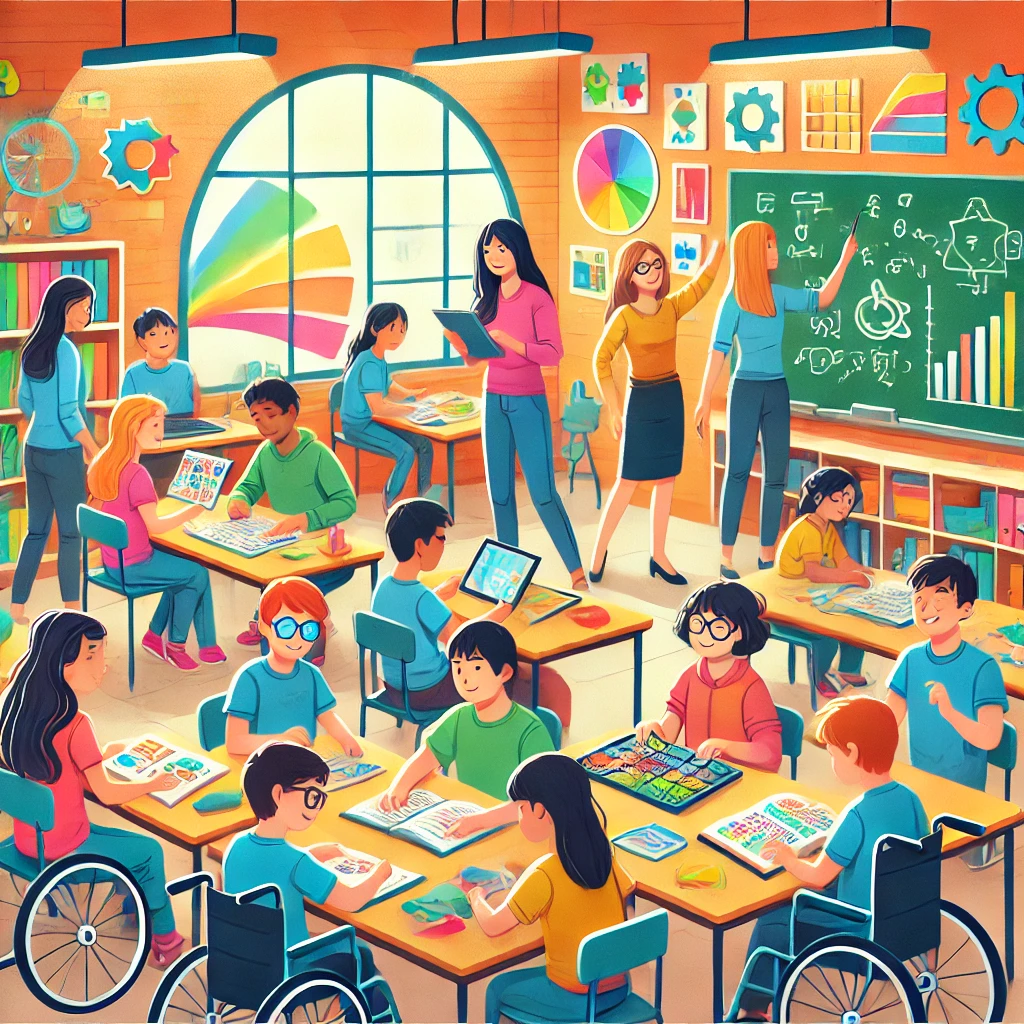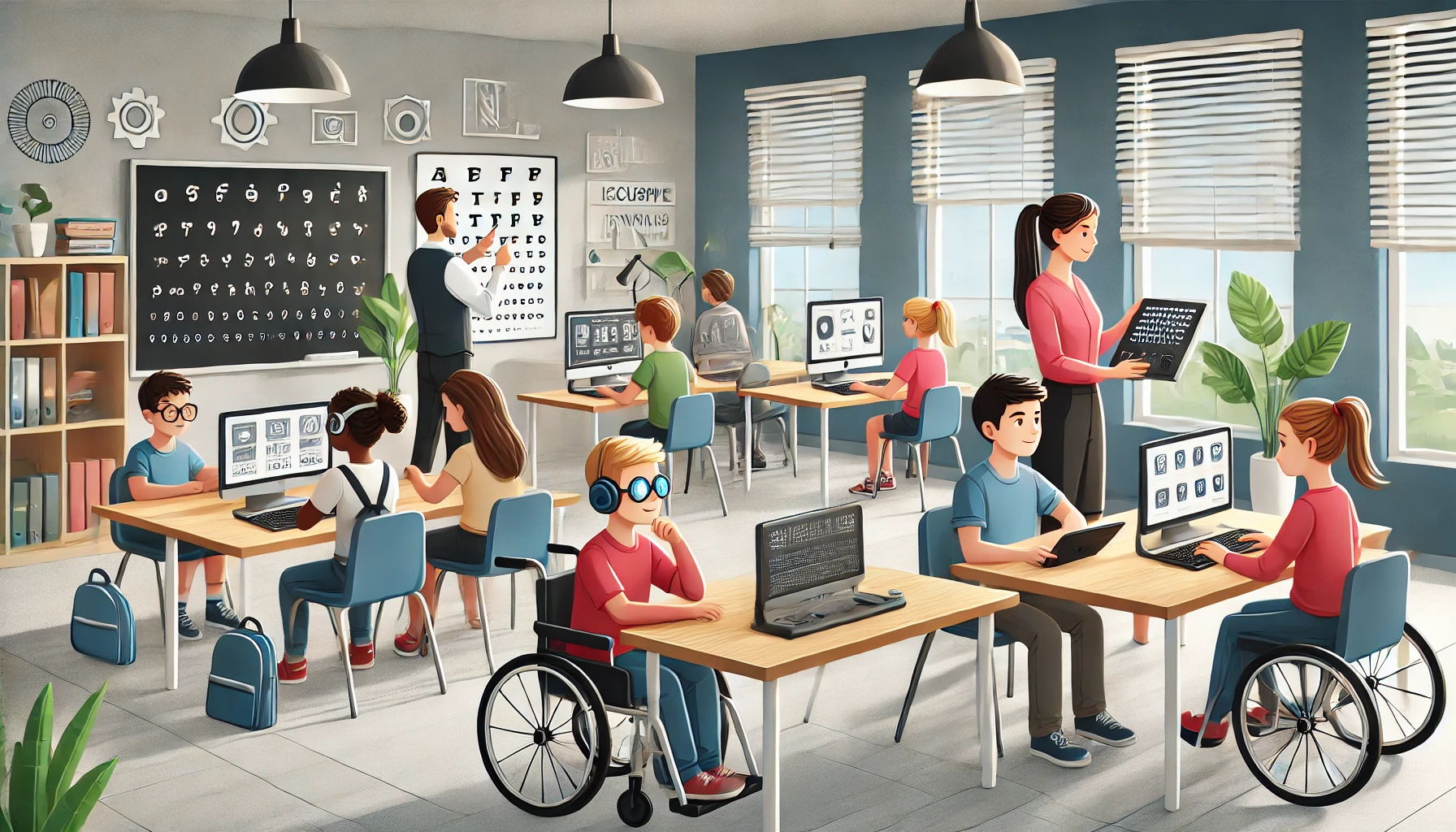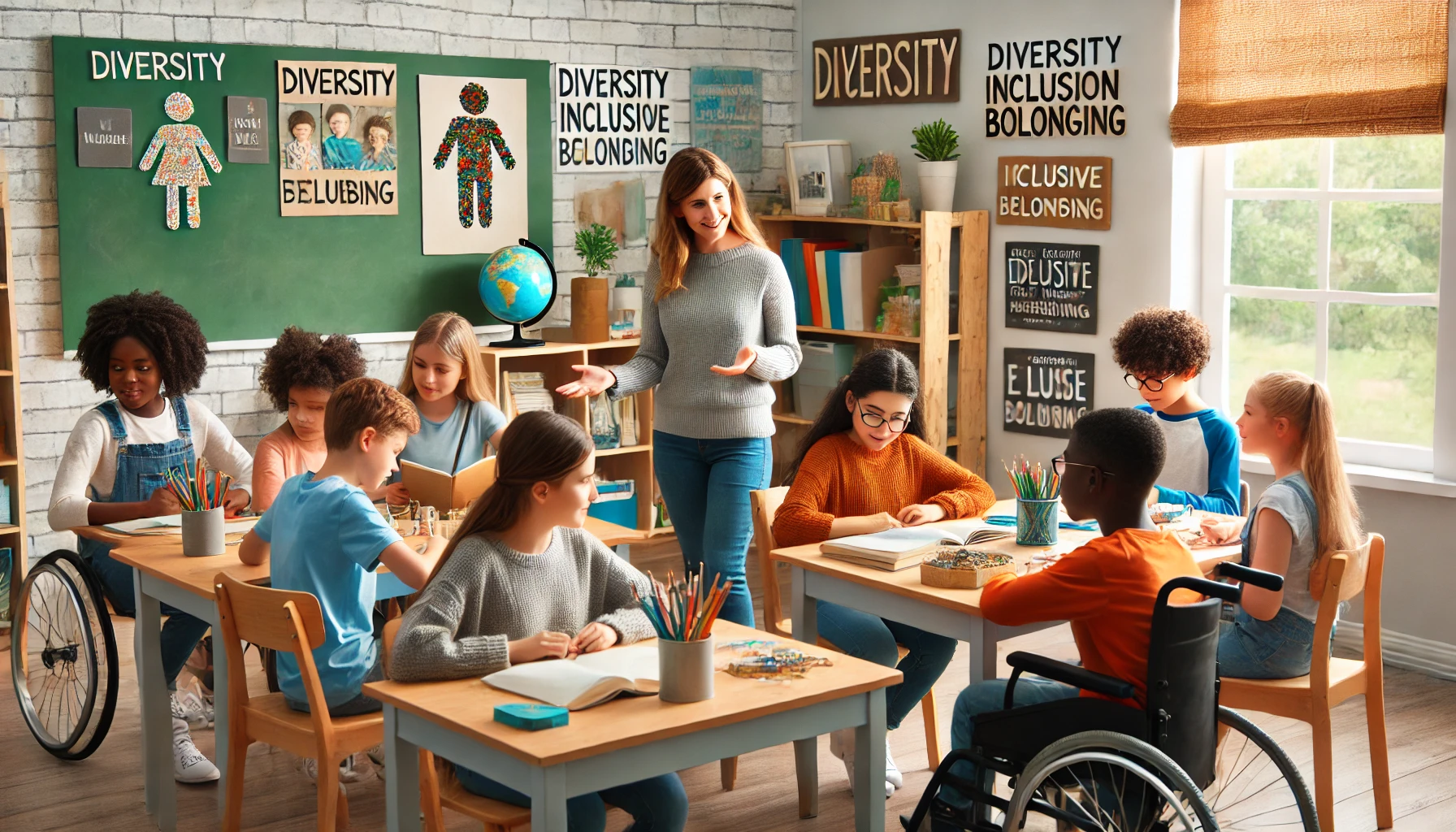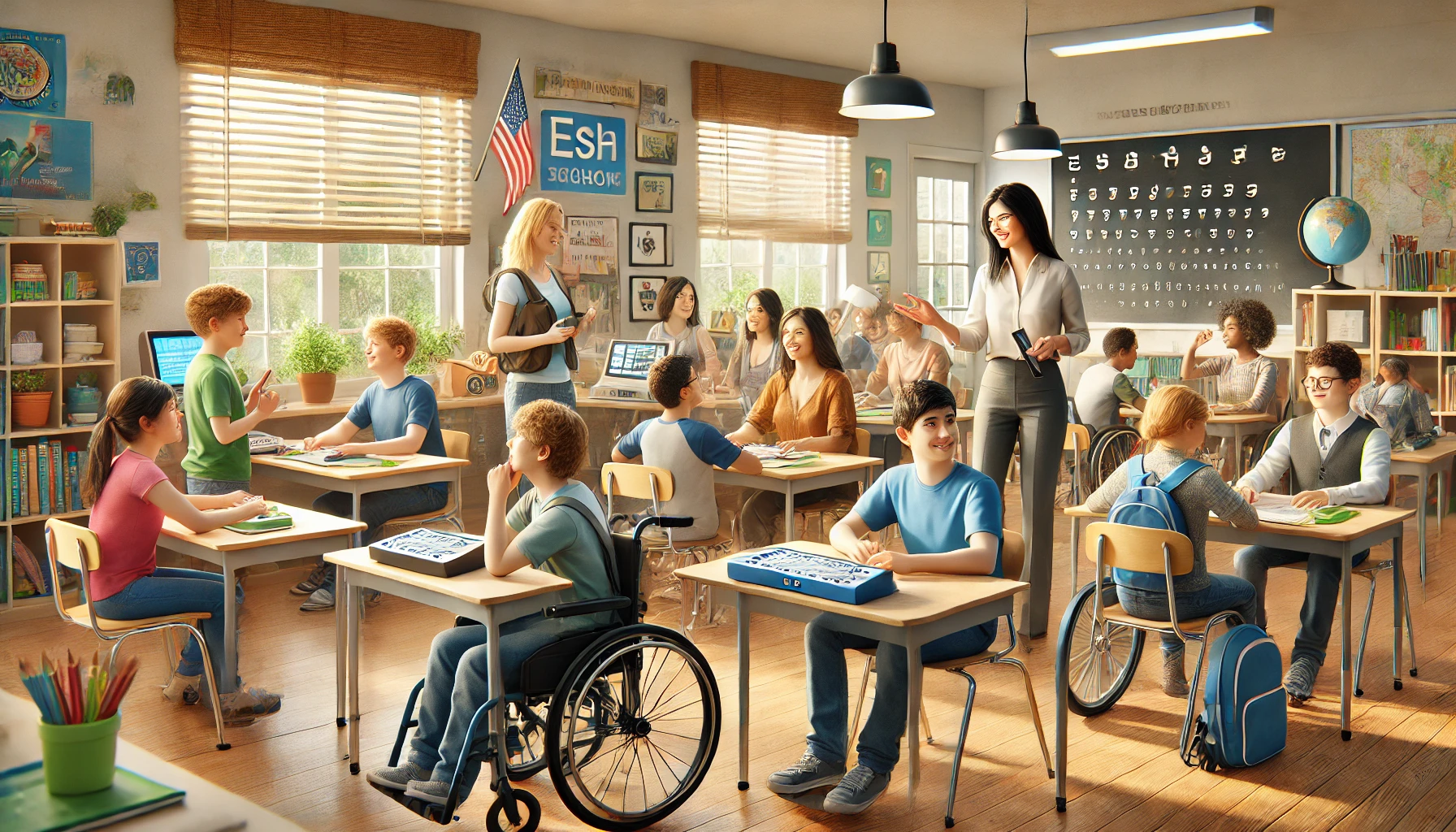Understanding Inclusive Education
When talking about education, inclusive education is like the secret sauce that spices up the learning world for all kids—whether they have unique talents, different abilities, or face challenges. It’s about making sure every child gets a fair shot at learning and thriving. Grasping what’s meant by special needs is the start to building classrooms where everyone can flourish.
Definition and Importance
Imagine a classroom where every kid gets to dive in and do their thing—that’s the gist of inclusive education. It goes the extra mile to make sure no student is left out or sidelined. It’s about tweaking things so each student—no matter who they are—feels right at home (Princeton Review).
Knowing why inclusive education matters isn’t just book stuff; it’s a game-changer. It champions diversity, fairness, and a whole lot of kindness in schools. When each student’s learning style is seen and heard, schools become places where everyone can grow and find their groove. Plus, it builds a tight-knit community vibe, making kids feel they belong, which boosts both school performance and social smarts.
Benefits of Inclusive Education
Inclusive education isn’t just about hitting the books—its perks touch every corner of a student’s life. Here’s why it rocks:
- Diversity and Fairness: It levels the playing field so every student can win, no matter where they come from.
- Making Friends and Connections: Classrooms become social hubs where kids learn to team up with peers from all walks of life.
- Feeling Good: Being in a space where you’re valued gives a nice bump to a student’s confidence and happiness.
- Learning More, Learning Better: By tweaking lessons to suit each kid, schools help them learn more effectively and stay excited about school.
Bringing inclusive education practices into the fold means spotting and smashing any roadblocks on the inclusion highway. It’s about setting up a space where students feel supported, making sure help is on hand when needed, and getting everyone in on the action. Schools can lead the charge by using smart strategies like Universal Design for Learning, shaking up how lessons are delivered, pairing students for mutual support, and tailoring education plans to individual needs. This approach opens the doors to an educational world where all students feel welcome and empowered to succeed (Princeton Review).
Principles of Inclusive Teaching
Inclusive teaching isn’t just some hot air balloon ride over education—it’s the glue that helps build bridges for students, zipping our world a little closer with every lesson. Instead of letting any student feel like a wallflower at a dance where everyone’s invited, this teaching style makes sure everyone’s out there on the floor, twirling in their own way. Got a wild idea or a shy perspective? There’s room for that! Whether it’s math or art, inclusive teaching is about seeing the sparks each learner can bring into this learning fiesta.
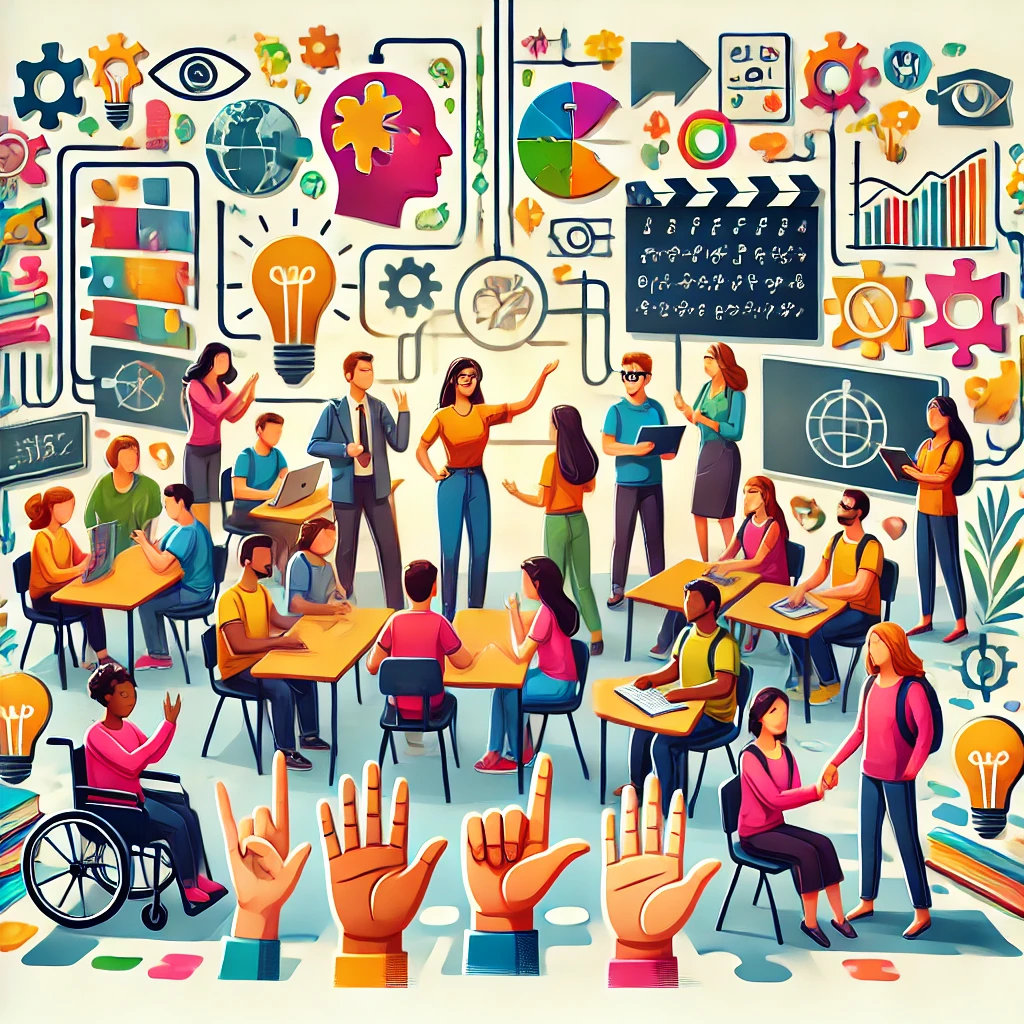
Student Engagement and Participation
Kick-starting inclusive education is all about getting everyone off the bench and into the game. No backseats here—inclusive classrooms aim to pile drive everyone’s creativity and intellect onto the stage. It’s not just about grading papers but nurturing minds by letting them voice opinions, jump into debates, and build castles out of group activities. When students know they’re heard, it sticks a name tag on belonging and sends empowerment through the roof.
Throw in a pinch of varied feedback and you’ve got a tasty recipe for engagement. Not everyone learns in the same way, right? Whether a student’s a verbal wizard, a pencil-doodling storyteller, or an analytical titan, inclusive classrooms celebrate these differences through methods flexible enough for everyone to shine. It’s like giving learning wings and letting each kid fly in their own sky.
Culturally Responsive Teaching
Now, if you’ve ever flipped through a really good photo album, you’d know each snap tells a different story. Culturally responsive teaching works kinda the same—it fills education with flavors and colors that reflect the backgrounds and identities of each student in the room. Your classroom’s a melting pot, so why not stir in some culture-rich content and see what tasty dishes knowledge can whip up?
But it’s more than just spice; it’s about opening the floor to real conversations. Encouraging students to lay out their cultural cards—be it through stories, traditions, or values—sparks enlightening exchanges that breed empathy and respect. When students learn to appreciate each other’s journeys, those invisible walls come tumbling down.
Embracing Diversity
Spotlight on diversity! It’s not just a phrase but a fundamental principle that drives the engine of inclusive education. Teachers don’t just accept diversity; they wave it like a flag on game day, turning differences into strengths. Each student’s perspective, talent, and journey is another ingredient in this diverse educational buffet.
Perhaps the coolest part? Challenging prevailing stereotypes and biases, taking them apart like old clocks and rejigging them into something fairer and more welcoming. An inclusive classroom ensures education is built on a level field, where students are free to explore and express, devoid of preconceived labels that do nothing more than weigh them down.
Blend these principles into the classroom mix and watch the magic unfold. With teachers, students, and even families and communities working hand-in-hand, the classroom becomes an orchestra where every player has a role. Together, they create the kind of symphony that isn’t just heard, but deeply felt by everyone involved.
Inclusive Education Practices
When it comes to inclusive education, what matters is the way practices are shaped to make sure all students get the fair shot they deserve, especially those with special needs. We’re talking the whole package—curriculum that’s just right for every learner, personalized student assessments, and the superstar role of special ed teachers.

Curriculum Design for Diverse Learners
Creating a curriculum that speaks to everyone in a class isn’t just smart; it’s a necessity. It’s like a buffet where every student, including those with various disabilities, finds something they love. Special ed teachers join forces with their general ed counterparts, building lessons that click for each kiddo. It’s more than just piecing together the subjects. We’re considering different learning styles, how kids process stuff, and the right support to make sure everyone gets it. This just-right setup means all students can get involved and shine.
Student Assessment and Individualized Plans
In classrooms that care about everyone, student assessments are not one-size-fits-all, especially for those with special needs. Special ed teachers dive into frequent check-ins to see how students are doing, ensuring goals aren’t just set but also met. These check-ins light the way to figuring out where a little extra help or a tweak here and there can boost the learning journey. It’s like each student has their own road map—known as an IEP—crafted to match their unique learning paths, outlining everything from goals to the tweaks needed to help them grow both academically and socially.
Role of Special Education Teachers
You could say special ed teachers are the glue of inclusive education. They are the champions for students with disabilities, making sure each child’s needs, and voices, are heard loud and clear. These teachers have a hand in shaping the curriculum by whipping up extra learning goodies and shifting lessons to fit everyone’s needs. As noted by American University, they gather folks together for IEP chats and stick around for regular progress check-ups. Plus, they’re always ready with one-on-one support when it’s needed.
The magic of inclusive education happens when those special ed pros team up with their fellow teachers, lending a hand to students and being pillars of inclusivity at school. Their smarts and passion build a place where every child can thrive, no matter what.
Creating Inclusive Learning Environments
For parents, educators, and caregivers of children with special needs, building learning spaces where everyone gets a chance to shine is critical to their growth and development. It’s all about working together, creating a team that blends the skills of educators, support staff, and tailored teaching methods so every student gets the help they need to succeed.
Teamwork Among Teachers
One key piece in the puzzle is getting teachers to work hand-in-hand. In many inclusive classrooms, teams teach together or experts join regular classes, mixing special-ed skills with general education. The magic happens when teachers share ideas, experiences, and skills to better meet the learning needs of all students. This teamwork approach sets the stage for a classroom where every kid feels like they belong and can learn.
Getting Support Staff Involved
Making sure support staff are part of the picture is crucial, too. Special-ed teachers and other helpers are woven into the fabric of the classroom, taking on important roles like ongoing assessments, organizing personalized learning plans (IEPs), and speaking up for kids with disabilities. By having these folks on the team, schools ensure that every student, no matter their hurdles, gets the personalized assistance they need to grow and do well in school and beyond.
Tailored Teaching
A big part of creating classrooms where everyone can learn is using lessons that suit different learning styles and needs. Strategies like the Universal Design for Learning and personalized plans help teachers reach each student on their level. This method lets educators tweak the way they teach and test, and adjust activities, so everybody, no matter their challenges or capabilities, can grasp the material and succeed.
Putting collaboration, support staff integration, and personalized teaching strategies into action helps create classrooms where every student, with special needs or not, feels seen, heard, and valued. These inclusive practices unlock the potential of all students, paving the way for a fairer and richer learning experience for everyone involved.
Evaluating School Inclusiveness
Making sure every kid, regardless of abilities, gets a fair shot at learning and thriving in school is a big deal. Picking out what’s unfair or getting in the way is a must before making school a welcoming spot for everyone.

Spotting What’s Not Fair
Teachers and school honchos need to keep an eye out for stuff that might be unfair or leave some kids out in the cold. Every so often, schools get stuck using old-school teaching ways instead of opting for more modern, inclusive approaches. Just tweaking what’s already there won’t cut it if the whole setup isn’t welcoming.
Some unfair practices you might bump into:
- Kids with disabilities not getting the same access to the core curriculum as other students.
- Being left out of fun stuff like clubs or sports.
- Keeping helpful gadgets just to special ed rooms instead of spreading the love.
Pinpointing these unfair spots helps schools patch up the gaps, making sure everyone can join in and learn together as a team.
Making the Changes That Count
Once those unfair practices are in the open, it’s high time schools switch things up to become more inclusive. Checking how schools stand on inclusiveness is key. Take Ms. Lawrence from Central Middle School – she found some hiccups holding back students with disabilities that needed fixing.
Here’s what schools can do to make learning spaces better:
- Crafting lessons that match the varied ways students learn.
- Creating assessment strategies clued into each student’s learning plans.
- Getting special ed teachers in on planning so inclusive practices aren’t an afterthought.
- Encouraging team-ups between teachers, families, and the community to support welcoming practices.
- Bringing support staff into daily routines to offer all-around help.
By spotting what’s off and rolling out changes, schools can amp up inclusiveness, making spaces better for everyone, disabilities or not. These efforts don’t just boost diversity; they prep students for a future where everyone fits in.
Key Components of Inclusive Education
Inclusive education is about creating a space where everyone, especially those with diverse needs, feels supported and inspired. Let’s dive into the essential ingredients that make this possible: celebrating student strengths, boosting engagement, and keeping everyone in the loop.
Strengthening Student Talents
One big idea behind inclusive education is all about looking for what each student is great at. Imagine starting with what kids love and excel in—it’s like teaching with superpowers! Instead of concentrating on what kids can’t do, schools should focus on what they can. This insight, emphasized by Monash University, is a big game changer. When teachers plan lessons around students’ natural abilities, it not only makes classes more fun but also turns education into an adventure of discovery. Teachers can see each student’s potential shining brightly and help them shine even more.
Student Engagement and Agency
For students, having a say in their learning is a big deal. When kids are allowed to jump in and express themselves, magic happens. Think of it like this—students who get involved genuinely care more and try harder. Monash University points out the importance of listening to students’ voices. When students feel that they’re heard and what they think matters, it changes the game. It leads to motivated learners who are ready to tackle challenges and own their accomplishments. It’s not just about handing them the mic—it’s about letting them steer their educational adventure.
Critical Stakeholder Engagement
Inclusive education isn’t just a task for educators alone. It’s a group effort, involving parents, teachers, students, and even the support crew at schools. Picture a team huddle—everyone shares ideas to make things better for students. Open channels of communication help create classrooms that accommodate all learners. Regular check-ins and positive feedback build a school where diversity is embraced and all students feel welcome to express themselves. Everyone needs to pitch in; that’s how inclusive education thrives and makes sure every student gets the best shot at learning.
Incorporating strength-based learning, valuing student input, and teaming up with parents and staff not only builds a welcoming school for all, but it also crafts a solid foundation for lifelong learning and positive self-esteem. Through this approach, every student can find their path to success.

